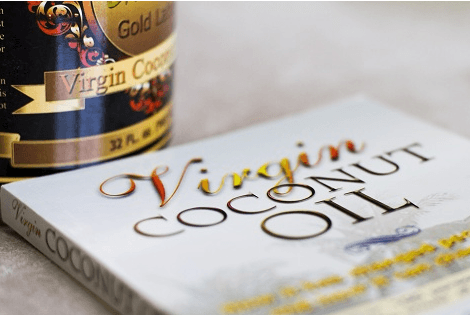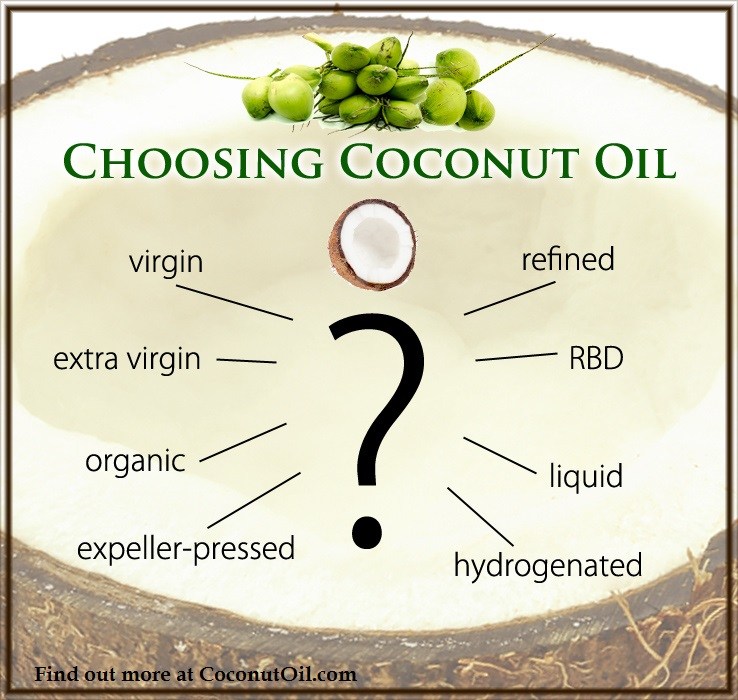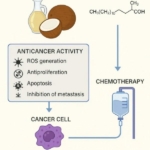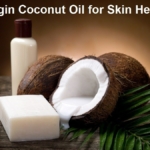|
Population Studies
There are quite a few studies that have been done on traditional diets in tropical areas that are high in coconut oil consumption. These studies back up the fact that Marianita’s experience growing up in the Philippines is common in cultures that derive much of their caloric intake from the saturated fats of coconut oil. In a study published in 1981, the populations of two South Pacific islands (Pukapuka and Tokelau) were examined over a period of time starting in the 1960s, before western foods were prevalent in the diets of either culture. The study was designed to investigate the relative effects of saturated fat and dietary cholesterol in determining serum cholesterol levels. Coconuts were practically a staple in the diets, with up to 60% of their caloric intake coming from the saturated fat of coconut oil. The study found very lean and healthy people who were relatively free from the modern diseases of western cultures, including obesity. Their conclusion: “Vascular disease is uncommon in both populations and there is no evidence of the high saturated fat intake having a harmful effect in these populations.”1
My friend Nida’s grandmother has continued to prepare coconut oil in the [traditional] manner… She is also a manghihilot. The herbs she adds are, among others, garlic and ginger. She rubs it on herself and her husband every night. They are still healthy. Nida tells of her cousins who were very poor. So poor, in fact, that they ate mostly coconut. Other kids teased them because they ate fresh coconut for breakfast instead of rice and fish, and munched it whenever they were hungry, picking it up from the copra being laid out to dry. These kids ended up being the healthiest in the neighborhood, fat, with smooth, shiny skin and good teeth! As teenagers, they never had skin eruptions. Luanne, Mindanao, Philippines
Other studies done among the Pacific islands were conducted back in the 1930s by Dr. Weston Price, a dentist. Dr. Price spent significant time traveling and examining traditional cultures, their diet, and dental and overall health, as compared to those eating more modern diets consisting of refined foods. His work is documented in the book Nutrition and Physical Degeneration (1939 Keats Publishing). As he traveled to islands throughout the South Pacific, he found the same thing wherever he went. Those eating a traditional diet consisting of high concentrations of coconut were in very good health, and were not obese even though they had such a high fat content in their diet. Those who through commercial trade with western countries were starting to eat more refined foods high in carbohydrates were starting to suffer common western diseases, including dental decay.
In India a study was done comparing traditional cooking oils, like coconut oil and ghee which are rich in saturated fats, with modern oils like sunflower or safflower oils which are mostly polyunsaturated, in relation to prevalence of heart disease and Type-II diabetes. The study was done by the Department of Medicine, at Safdarjang Hospital in New Delhi. The study was titled “Choice of cooking oils–myths and realities”, and was published in the Journal of the Indian Medical Association in 1998. They found that while saturated fats were portrayed as unhealthy in favor of newer polyunsaturated vegetable oils, that heart disease and diabetes had actually increased after consumption of the traditional oils like coconut oil and ghee decreased.2 Weight gain typically is associated with heart disease and diabetes. They concluded that these newer “heart-friendly” oils like sunflower or safflower oils possess an undesirable Omega 6 fatty acid ratio to Omega 3 fatty acids, and that there are numerous research data now available to indicate that the sole use or excess intake of these newer vegetable oils are actually detrimental to the health of Indians.
My wife and I have been using the Virgin Coconut Oil for about 3 months now (a teaspoon in the morning and at night). We have noticed increased energy along with a decrease in the amount of time it takes to overcome viruses. We attribute this to the anti-viral properties of the virgin coconut oil. Also, we use the oil as a moisturizer and have noticed less dryness of our skin in our dry winter climate. Tom Rutland, Vermont
P.K. Thampan, the former Chief Coconut Development officer of Coconut Development Board in India, has found the same thing true in his studies of traditional cultures consuming large amounts of coconut. In his book “’Facts and Fallacies about Coconut Oil” Thampan shows that population studies conducted in countries where coconut oil is a part of the normal diet of the people have revealed that coconut oil consumption is unrelated to coronary heart disease mortality and morbidity, which is contrary to what is being taught in many of these countries. Observations recorded in these countries, where coconut kernel and coconut oil form major dietary components, have shown a longer life expectancy at birth than in countries with negligible intake of coconut products. There are also instances of longer life expectancy in predominantly coconut-consuming areas than in other places within the same country that eat less coconut.3
Dr. P. Rethinam and Muhartoyo wrote in the Jakarta Post, on June 18, 2003, that before 1950, heart attacks were not common in Sri Lanka. However, hospital admission rates for heart attacks grew dramatically from 1970 to 1992. On the other hand, the Central Bank of Sri Lanka had determined that the coconut consumption has gone down from 132 nuts per person per year in 1952 to 90 per person per year in 1991. Because of the saturated fat scare of recent years condemning coconut oil, people ate fewer coconuts and heart disease and the associated weight gain actually increased! H. Kaunitz wrote in 1986 that the 1978 edition of the Demographic Yearbook of the United Nations reported that Sri Lanka had the lowest death rate from ischemic heart disease, while coconut oil was their main dietary fat.4
The Research
So how do people in the tropics do it? How can people on traditional diets consume so much saturated fat and remain slim and healthy?
Researchers have known for quite some time that the secret to health and weight loss associated with coconut oil is related to the length of the fatty acid chains contained in coconut oil. Coconut oil contains what are called medium chain fatty acids, or medium chain triglycerides (MCTs for short). These medium chain fatty acids are different from the common longer chain fatty acids found in other plant-based oils. Most vegetable oils are composed of longer chain fatty acids, or triglycerides (LCTs). LCTs are typically stored in the body as fat, while MCTs are burned for energy. MCTs burn up quickly in the body. They are a lot like adding kindling to a fireplace, rather than a big damp log.
Coconut oil is nature’s richest source of MCTs. Not only do MCTs raise the body’s metabolism leading to weight loss, but they have special health-giving properties as well. The most predominant MCT in coconut oil, for example, is lauric acid. Lipid researcher Dr. Jon Kabara states “Never before in the history of man is it so important to emphasize the value of Lauric Oils. The medium-chain fats in coconut oil are similar to fats in mother’s milk and have similar nutriceutical effects. These health effects were recognized centuries ago in Ayurvedic medicine. Modern research has now found a common link between these two natural health products—-their fat or lipid content. The medium chain fatty acids and monoglycerides found primarily in coconut oil and mother’s milk have miraculous healing power.”5 Outside of a human mother’s breast milk, coconut oil is nature’s most abundant source of lauric acid and medium chain fatty acids.
I have personal experience with using Virgin Coconut Oil (VCO) to richen my milk supply 🙂 In fact, this is why I started taking VCO in the first place. My baby was very low weight and I just knew that something wasn’t right. Our pediatrician was no help~ he said because she hadn’t lost weight, she was fine. I finally went to a naturopathic doctor, and explained my situation (besides the baby gaining only a few ounces, I had PPD). Since my baby was my 9th and I’d nursed the last 6… He said that I probably didn’t have enough good fats in my system. That would account for my milk not being rich enough/full of fat to help her grow, and it also probably had a great deal to do with my hormones being out of whack and me struggling with PPD. I started taking VCO when the baby was 5 months old. By the time she was 7 months old, she’d gained 3 whole pounds! My PPD had disappeared also 🙂
We went back for a weight check when the baby was 9 months old, and she had gained another 2 pounds and was not only back on the weight chart, but on the correct curve for her age, etc. I had also noticed that she was developing new skills all at once, that maybe she’d not been able to before. My pediatrician was so impressed he asked me what I’d done… I was a little nervous about telling him, but truthfully, the only thing I’d done differently was to take the VCO! So I told him and he never rolled his eyes or treated me like I’d lost my mind 😉 He even wrote it in her chart! Jan El Paso, TX
Much of the recent research done on coconut oil and lauric acid, the most predominant fatty acid chain found in coconut oil, has centered around the anti-microbial and anti-viral properties of this unique fatty acid. Today, many strains of bacteria are becoming resistant to antibiotics, and antibiotics are generally ineffective in treating virus infections. When lauric acid is consumed in the diet, either in human breast milk or in coconut oil, lauric acid forms a monoglyceride called monolaurin, which has been shown to destroy several bacteria and viruses, including listeria monocytogenes and helicobacter pylori, and protozoa such as giardia lamblia. Some of the viruses that have been destroyed by monolaurin include HIV, measles, herpes simplex virus-1, vesicular stomatitis virus, influenza and cytomegalovirus.6 There is also evidence now that the MCTs in coconut oil kill yeast infections, such as Candida.7
So now that we know that these wonderful health benefits found of coconut oil that lead to weight loss and vibrant health are in the fatty acids of coconut oil, the question that begs to be answered is why hasn’t this secret been revealed in the past?
The answer is that is has! The incredible health properties of MCTs was researched and documented by people like Dr. Jon Kabara as far back as 1966. MCTs have been part of infant formulas and hospital formulas for many years. The food industry at one time considered coconut oil to be the most superior dietary oil for use in baking and food preparations. At one time, it was a significant part of the American diet.
Our whole family is really enjoying your Virgin Coconut Oil. The original purpose for the purchase was because we have a special needs child who has quadriplegic cerebral palsy and cortical blindness. Unlike most children in her condition, our daughter is fed pureed foods orally and given liquids via gastrostomy tube. She is able to tolerate very few proteins and fats because of the extremely slow movement of her digestive system. Your Virgin Coconut Oil is gentle on her system and she tolerates it wonderfully. This is such an accomplishment since there are only a few oils available that she is able to obtain nourishment and sustenance from. The taste is pleasant and mild, and we are always pleased to provide her with foods that are whole and unprocessed. Much to the surprise of her many doctors, she continues to gain weight steadily, although she is small for her age. The nutritional consultants at the hospital where she receives all necessary care (recently noted to be one of the top ten in the country) continue to instruct us with regard to her nutrition “just keep doing whatever you are doing because she is thriving wonderfully.” They have no explanation for her wonderful skin, great immune system, and weight gain- all areas in which children like her struggle for daily their entire lives. We thank God for such wonderful foods as the coconut, for blessing her with great health, and for companies such as yours (Tropical Traditions) who can provide quality products with great integrity. Carissa Independence, Missouri
However, during World War II when the Japanese occupied most of the South Pacific and the Philippines, supplies of coconut oil were cut off for several years. Americans were forced to turn to alternative sources for cooking oils, and this is when many of the polyunsaturated oils began to make their way into the market place.
How Did Coconut Oil Get Such a Bad Reputation?
Beginning in the 1950s, public opinion towards saturated fats in general, and then later towards coconut oil in particular, began to turn negative. This history of the edible oil industry in the US has been well documented by Dr. Mary Enig, Ph.D., and can be read at www.coconutoil.com or at the Weston Price Foundation website (www.westonaprice.org). Her articles “The Oiling of American” and “Coconut: In Support of Good Health in the 21st Century” provide in depth analysis of the saturated fat research, and the negative campaigns that have been waged against coconut oil.
The anti saturated fat theory apparently began in the 1950s, with the steep rise of heart disease. While heart disease probably caused no more than 10% of all deaths in the U.S. prior to the 1920s, by the 1950s it had risen to more than 30% of all deaths. Researchers were looking for the cause of this new threat to the nation’s health. Some researchers suggested that cholesterol levels were the problem, and that saturated fats raised cholesterol levels. One such study was based on examining the artery plaques found in American soldiers who had died in Korea. With high levels of cholesterol found in artery plaques, some started looking at cholesterol levels found in foods as a possible cause. Cholesterol is found only in animal foods such as meat, fish, cheese, eggs and butter. Soon a “lipid hypothesis” was formed that stated “saturated fat and cholesterol from animal sources raise cholesterol levels in the blood, leading to deposition of cholesterol and fatty material as pathogenic plaques in the arteries.” So the traditional foods of butter, eggs, and fat from meats were “out”, and the new vegetable oils were seen as heart-healthy replacements. However, research now shows that cholesterol levels in food have little or no effect on blood cholesterol levels, and the whole lipid theory of heart disease has been rejected by many researchers and doctors. Malcom Kendrick M.D., Dr. Mary Enig Ph.D., Uffe Ravnskov M.D., Ph.D (author of The Cholesterol Myths), George Mann M.D., Sc.D, and many other top researchers have written extensively on the flaws of the “cholesterol theory” of heart disease. (See also: What if Saturated Fat is Not the Problem? A professor of biochemistry provides perspective; andWhat if bad fat isn’t so bad? No one’s ever proved that saturated fat clogs arteries, causes heart disease at MSNBC; and Diet and Fat: A Severe Case of Mistaken Consensus at N.Y. Times; and The Soft Science of Dietary Fat by Gary Taubes.)
So what was the cause of the rapid rise of heart disease in the US? While there are many factors to consider, one thing we know is that after World War II there were some significant dietary changes in the American diet, including that kinds of fats Americans were eating. As Mary Enig reports:
Butter consumption was declining while the use of vegetable oils, especially oils that had been hardened to resemble butter by a process called hydrogenation, was increasing—dramatically increasing. By 1950 butter consumption had dropped from eighteen pounds per person per year to just over ten. Margarine filled in the gap, rising from about two pounds per person at the turn of the century to about eight. Consumption of vegetable shortening—used in crackers and baked goods—remained relatively steady at about twelve pounds per person per year but vegetable oil consumption had more than tripled—from just under three pounds per person per year to more than ten.8
What we know today, but was not known well in the 1950s, is that hydrogenated and partially hydrogenated vegetable oils create trans fatty acids that have been linked to heart disease. (see below)
Coconut Oil: the Center of Attack
The saturated fats/cholesterol scare soon became mainstream thinking, however, and before long certain groups began taking aim at the saturated fats found in coconut oil. At one time coconut oil was a significant part of the American diet. Suddenly, we were told to avoid anything with tropical oils—from theater popcorn oil to packaged snack foods, which was a complete turn from when the food industry considered coconut oil to be an excellent dietary oil for use in baking and food preparations.
Dr. Mary Enig states:
The coconut industry has suffered more than three decades of abusive rhetoric from the consumer activist group Center for Science in the Public Interest (CSPI), from the American Soybean Association (ASA) and other members of the edible oil industry, and from those in the medical and scientific community who learned their misinformation from groups like CSPI and ASA. According to one of CSPI’s own press releases, “In 1984, CSPI organized the first national campaign to pressure fast-food restaurants and food companies to stop frying with beef fat and tropical oils, which are high in the cholesterol-raising saturated fats that increase the risk of heart disease. After six years of public pressure—including full-page newspaper ads placed by Nebraska millionaire and cholesterol-crusader Phil Sokolof—the industry finally relented in 1990.”9
Congress held hearings in 1988 to discuss the safety of tropical oils. Dr. George Blackburn, a Harvard medical researcher, testified that coconut oil has a neutral effect on blood cholesterol, even in situations where coconut oil is the sole source of fat. Surgeon General C. Everett Koop dismissed the entire attacks on coconut oil as “Foolishness,” and continued to say “but to get the word to commercial interests terrorizing the public about nothing is another matter.” However, with no strong political influence in Washington from the coconut-producing countries, the ASA and CSPI prevailed and soon coconut oil almost vanished from the American diet. At one time a significant part of the American diet, today it has been replaced by the so called “healthier” vegetable oils.
(See also: How a P.R. Campaign Led to Unhealthy Diets)
The Replacement for Saturated fats: Toxic Oils
Today, walk into any major grocery or retail food chain, visit the cooking oil section and you will not find much in the way of saturated fats. What have replaced saturated fats are now liquid vegetable oils, also known as polyunsaturated oils.
Unfortunately, polyunsaturated oils are not stable and they are prone to oxidation. These commercial vegetable oils are a recent addition to our diet since World War II, when manufacturers developed a process to make them shelf stable by using hydrogenation. Hydrogenating, or partially hydrogenating these oils, also makes them more solid (mimicking saturated fats) and useful for baking and deep frying.
Research now shows that the processing of these polyunsaturated oils creates a whole new subclass of fats called trans fatty acids. These trans fatty acids are not found in nature, and are very toxic. Studies are now showing that trans fatty acids are linked to cardiovascular disease, diabetes, and cancer, among others. In January 2004 Denmark became the first country in the world to ban the manufacture of trans fatty acids in its foods.10 In Europe, the consumption of trans fatty acids is decreasing. In the U.S., the FDA is requiring all food manufacturers to list trans fatty acids in the nutrition panel of their labels by the year 2006. The FDA website states:
On July 9, 2003, FDA issued a regulation requiring manufacturers to list trans fatty acids, or trans fat, on the Nutrition Facts panel of foods and some dietary supplements. With this rule, consumers have more information to make healthier food choices that could lower their consumption of trans fat as part of a heart-healthy diet. Scientific reports have confirmed the relationship between trans fat and an increased risk of coronary heart disease. Food manufacturers have until Jan. 1, 2006, to list trans fat on the nutrition label. FDA estimates that by three years after that date, trans fat labeling will have prevented from 600 to 1,200 cases of coronary heart disease and 250 to 500 deaths each year.11
What are the polyunsaturated oils commercially processed in the US containing trans fatty acids? Soy, corn, cottonseed, and safflower are the most common. 90% of all margarines in the US today are made from soy oil, and loaded with trans fatty acids. These are the very fats that CSPI promoted as a replacement for saturated fats back in the 1980s. As Dr. Mary Enig writes:
The whitewash of trans fatty acids began in 1987 with an article by Elaine Blume, published in CSPI’s Nutrition Action newsletter. Wrote Blume: “From margarine to Tater Tots, partially hydrogenated vegetable oils play a major role in our food supply. . . . In fact, hydrogenated oils don’t post a dire threat to health. . . . Improving on Nature. . . . Manufacturers hydrogenate. . . these vegetable oils so they won’t become rancid while they sit on shelves, or during frying. . . . it seems unlikely that hydrogenation contributes much to our burden of heart disease. . . The fact that hydrogenated oils appear to be relatively benign is cause for thanks, because these fats are everywhere.”
In 1988, CSPI published a booklet called Saturated Fat Attack, which defended trans fatty acids and partially hydrogenated vegetable oils and called for pejorative labeling of “saturated” fats. The booklet contained a section called “Biochemistry 101,” which claimed that only tropical oils were dangerous when hydrogenated. “Hydrogenated (or partially hydrogenated) fats are widely used in foods and cause untold consternation among consumers. . . [they] start out as plain old liquid vegetable oils (usually soybean), which are then reacted with hydrogen. . . converting much of the polyunsaturated fatty acids to monounsaturated fatty acids. . . [with]. . . small amounts. . . converted to saturated fatty acids. . . [e.g.], stearic acid, which seems to have no effect on blood cholesterol levels.
“Overall, hydrogenated fats don’t pose a significant risk. . . exceptions are hydrogenated [tropical oils, which are made]. . . even worse after hydrogenation.”
Obviously, the individuals writing the booklet were completely ignorant (or pretended to be ignorant) of lipid science. Modern hydrogenation methods create trans fatty acids rather than monounsaturated fatty acids, and very few saturated fatty acids. By 1988, the adverse effects of trans fats were well known. The article points out that stearic acid has no effect on blood cholesterol levels, yet CSPI continued to accuse beef tallow, which is rich in stearic acid, of “raising cholesterol and increasing the risk of heart disease.” As for the tropical oils, they do not need to be hydrogenated!12
By 1990 the dangers of trans fats from hydrogenated vegetable oils was so well documented, that CSPI had to completely change their position. As Dr. Enig writes:
The revisionism began in December 1992 when Ms. Liebman wrote: “We’ve been crying ‘foul’ for some time now, as the margarine industry has tried to convince people that eating margarine was as good for their hearts as aerobic exercise. . . . And we warned folks several years ago that trans fatty acids could be a problem. . . . That’s especially true now that we know that trans fatty acids are harmful, but we don’t know how much trans are in different foods.” Of course, CSPI had issued no such warning, but had been defending trans fats for more than five years. And there’s no apology for falsely demonizing traditional fats. “Don’t switch back from margarine to butter,” wrote Ms. Liebman, “. . . try diet or whipped margarine. . . use a liquid margarine.”13
The Benefits of Saturated Fats
Most of the fats in the diet of our forefathers were saturated fats. This is also true of many traditional cultures. Tropical diets, for example, get much of their fats from coconuts and palm oil, which are rich in saturated fats. As we have seen with our experience in the Philippines, these traditional cultures have not had the obesity and health problems that we are seeing today in our culture, even though they had a diet high in saturated fats.
At 2 years of age, my daughter was screaming, grunting and pointing and grunting for most things. She had a very small vocabulary (despite us trying to teach her words for things). We discovered that a cousin of hers has NIDS and started researching to find out if our daughter might have NIDS as well. NIDS is NeuroImmune Dysfunction Syndrome. Basically it says there is a virus attacking the brain that causes Autism, ADD, ADHD and CFS and the whole range in-between (including apraxia). Her son was put on a ton of pills in order to help him (antivirals, antibacterials, antifungals and others). Since coconut oil is a known NATURAL antiviral, antibacterial and antifungal, I figured it could not hurt to try it. So I immediately replaced all our cooking oils with coconut oil. I also gave her a supplement of coconut oil (1-2 teaspoons a day).
While I have no scientific proof that coconut oil helped my daughter, within days she was speaking more words. She was also trying harder to communicate. She is now 2 1/2 and speaking 3-4 word sentences! Her speech is still a little delayed (she has difficulty forming the words – I believe she has always had apraxia, but there has been no official diagnosis), and she is sometimes a little difficult to understand (not able to pronounce clearly). But she no longer grunts and points at objects. She even tells me “I love you Mommy.” I will continue to give my daughter coconut oil because I truly feel that it is helping her. And I am thankful that we did not have to give her all those pills her cousin is on! Paula Colorado Springs, CO
One reason why saturated fats have a long history of use in traditional cultures is because they are very stable fats that do not easily oxidize (turn rancid). Virgin Coconut Oil, for example, will not go rancid even at room temperatures in the tropics for a couple of years. Conversely, the refined oils that many Americans use are very unstable and turn rancid (oxidize) quickly. Oxidized oils are very toxic to the body and they can cause wide spread free-radical damage.
In addition to their shelf stability, saturated fats have many important roles in the body’s chemistry: For example:
- Saturated fatty acids constitute at least 50 percent of cell membranes. They give our cells necessary firmness and integrity.
- They play a vital role in the health of our bones. For example, at least 50 percent of our dietary fats need to be saturated for calcium to be effectively incorporated into the skeletal structure.14
- They lower Lp(a), a substance in the blood that indicates proneness to heart disease.15
- They protect the liver from the toxic effects of alcohol and certain drugs.16
- They enhance the immune system.17
- They are needed for the proper utilization of essential fatty acids. Elongated omega-3 fatty acids are better retained in the tissues when the diet is rich in saturated fats.18
- Saturated 18-carbon stearic acid and 16-carbon palmitic acid are the preferred foods for the heart, which is why the fat around the heart muscle is highly saturated.19 The heart draws on this reserve of fat in times of stress.
- Short- and medium-chain saturated fatty acids have important antimicrobial properties. They protect us against harmful microorganisms in the digestive tract.
About the author: Unlike many people who write about coconut oil by simply reading about it, Brian Shilhavy actually lived in a coconut producing area of the Philippines for several years with his family, observing firsthand the differences between the diet and health of the younger generation and those of his wife’s parents’ generation still consuming a traditional diet. This led to years of studying Philippine nutrition and dietary patterns first hand while living in a rural farming community in the Philippines. Brian is the author of the best-selling book: Virgin Coconut Oil: How it has changed people’s lives and how it can change yours!
Read the Virgin Coconut Oil eBook on Your Mobile Device!







 Research Continues to Show Virgin Coconut Oil's Effectiveness in Treating Cancer
Research Continues to Show Virgin Coconut Oil's Effectiveness in Treating Cancer Coconut Oil Continues to Benefit Alzheimer's Patients over Drugs as Studies Continue for Neurological Benefits
Coconut Oil Continues to Benefit Alzheimer's Patients over Drugs as Studies Continue for Neurological Benefits How the Simple High-Fat Low-Carb Ketogenic Diet Continues to Change People's Lives
How the Simple High-Fat Low-Carb Ketogenic Diet Continues to Change People's Lives New Studies Continue to Show that Coconut Oil is the Best Oil for Treating Skin Conditions and Maintaining Healthy Skin and Teeth
New Studies Continue to Show that Coconut Oil is the Best Oil for Treating Skin Conditions and Maintaining Healthy Skin and Teeth New Study Confirms Health Benefits of Coconut Oil and USDA False Claims Against It
New Study Confirms Health Benefits of Coconut Oil and USDA False Claims Against It